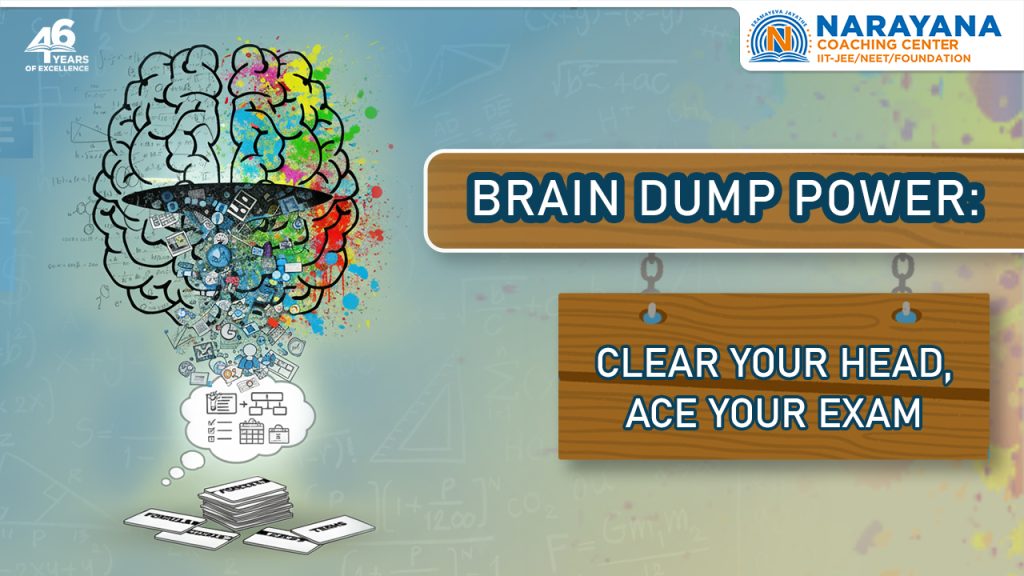
Introduction: The Exam Stress Struggle
Exams can feel overwhelming. You might sit at your desk, notes and books spread everywhere, only to realise your brain feels full—like a computer with too many tabs open. Thoughts race: “Did I study enough?” “What if I forget everything?” “Which formula comes first?”
That’s where the Brain Dump Technique comes in. It’s a simple yet powerful strategy to clear mental clutter, sharpen focus, and help you feel more confident before exams. Whether you’re in 8th grade or preparing for your 12th-grade finals, this method can become a game-changer in how you study and perform.
What Is the Brain Dump Technique?
A brain dump is exactly what it sounds like—emptying all the thoughts, worries, and information swirling in your head onto paper. Think of it as hitting the “refresh” button for your brain.
Instead of juggling dozens of ideas in your mind, you put them down in writing. This frees your brain to process, organise, and recall information better when you need it.
Why Do Students Struggle During Exams?
Exams feel stressful for several reasons:
- Information Overload – Trying to memorise too many details at once.
- Anxiety & Negative Thoughts – “What if I fail?” plays on repeat.
- Poor Organisation – Notes, formulas, and key points feel scattered.
- Mental Fatigue – The brain tires quickly when overloaded.
The brain dump helps tackle all of these challenges at once.
How the Brain Dump Technique Works
The beauty of this method is that it’s simple and requires nothing more than a pen and paper (or a digital notes app). Here’s how you can do it step by step:
Step 1: Set Aside 5–10 Minutes
Before studying or right before an exam, grab a notebook and pen. Give yourself a short window.
Step 2: Write Everything Down
Dump everything running through your mind:
- Important formulas
- Vocabulary words
- Key concepts
- Reminders (e.g., “Bring calculator!”)
- Random thoughts like “I’m hungry” or “I need to text my friend”
Step 3: Organise the List
Once your brain feels lighter, highlight or circle what matters most for your exam prep. Cross out distractions.
Step 4: Review Before the Test
On exam day, do a mini brain dump on scrap paper right before starting the test. This prevents wasting mental energy worrying about forgetting.
The Science Behind Brain Dumps
Psychologists explain that our brains have limited working memory. When too many thoughts compete for space, focus and recall suffer.
Writing things down helps you:
- Free up brainpower for problem-solving
- Reduce exam anxiety
- Strengthen memory recall, as writing activates deeper learning pathways
In short, brain dumps act like a mental decluttering session.
Benefits of the Brain Dump Technique for Students
Students who use this method report multiple benefits, especially during exams:
- Reduced Stress: Clears negative “what if” thoughts
- Better Focus: Allows the brain to prioritise important material
- Stronger Memory Recall: Writing reinforces learning
- Improved Confidence: Feeling organised boosts self-belief
- Time Management: Saves time and prevents panicking about what to study
When to Use the Brain Dump Technique
Brain dumps can be used at various times, depending on your needs:
- Before Study Sessions: Clears distractions and sharpens focus
- After Studying: Checks what you’ve actually remembered
- Before Sleeping: Helps your brain relax and improves sleep quality
- During Exams: Quickly jot down formulas or key points on rough paper
Practical Examples for Students
Here’s how different students might use brain dumps:
- Maths Exam Prep: Write every formula you remember, then review which ones need more practice.
- History Test: List important dates and events, then highlight the ones you tend to forget.
- Science Quiz: Dump definitions, diagrams, or processes like photosynthesis or Newton’s laws.
- Language Exam: Write vocabulary words, essay structures, or grammar rules.
Common Mistakes to Avoid
Although brain dumps are simple, some students use them incorrectly. Avoid these pitfalls:
- Spending Too Much Time: A dump should be quick, not a long essay.
- Not Organising Afterwards: Dumping is step one; organising is step two.
- Doing It Once Only: Consistency makes the habit powerful.
- Using It as a Substitute for Studying: It’s a helper, not a replacement.
Tips to Make Brain Dumps More Effective
- Use coloured pens or highlighters to separate topics.
- Keep a dedicated “brain dump” notebook.
- Try doing it every morning during exam week.
- Pair it with deep breathing to calm nerves.
Conclusion: Refresh Your Mind, Boost Your Confidence
Exams don’t have to feel like a mental battlefield. The Brain Dump Technique gives your brain the space it needs to think clearly, recall information, and stay calm.
For students from 8th to 12th grade, this simple habit can make a huge difference—not just in exams but in everyday study sessions. When you feel stressed or overwhelmed, grab a pen, do a quick brain dump, and let your mind breathe.
✅ Pro Tip: Combine the Brain Dump Technique with strategies like active recall, spaced repetition, and practice tests for the ultimate exam prep plan.
FAQs About the Brain Dump Technique
1. Can brain dumps replace studying?
No. They’re a tool to organise your thoughts, not a replacement for reviewing material.
2. How long should a brain dump take?
5–10 minutes is ideal. Keep it short and simple.
3. Can I use a digital brain dump instead of paper?
Yes, but handwriting often improves memory retention.
4. What if I don’t know what to write?
Start with whatever is on your mind, even if it seems unimportant. The key is to unload thoughts.
5. Should I brain dump every day?
During exam season, yes! Daily dumps help reduce stress and keep you organised.
6. Can brain dumps help with subjects like art or music?
Definitely. You can jot down themes, ideas, or practice routines to stay focused.
